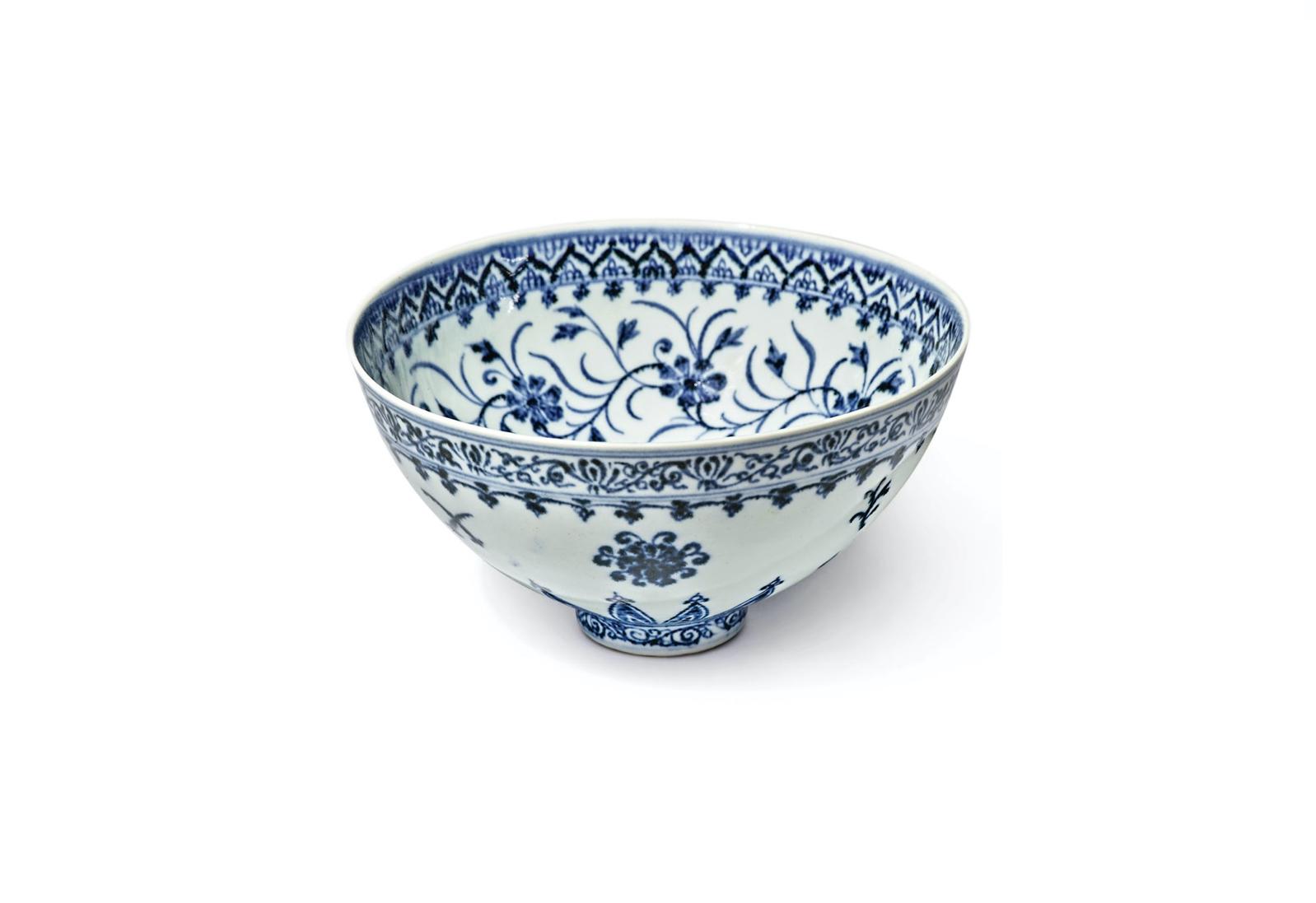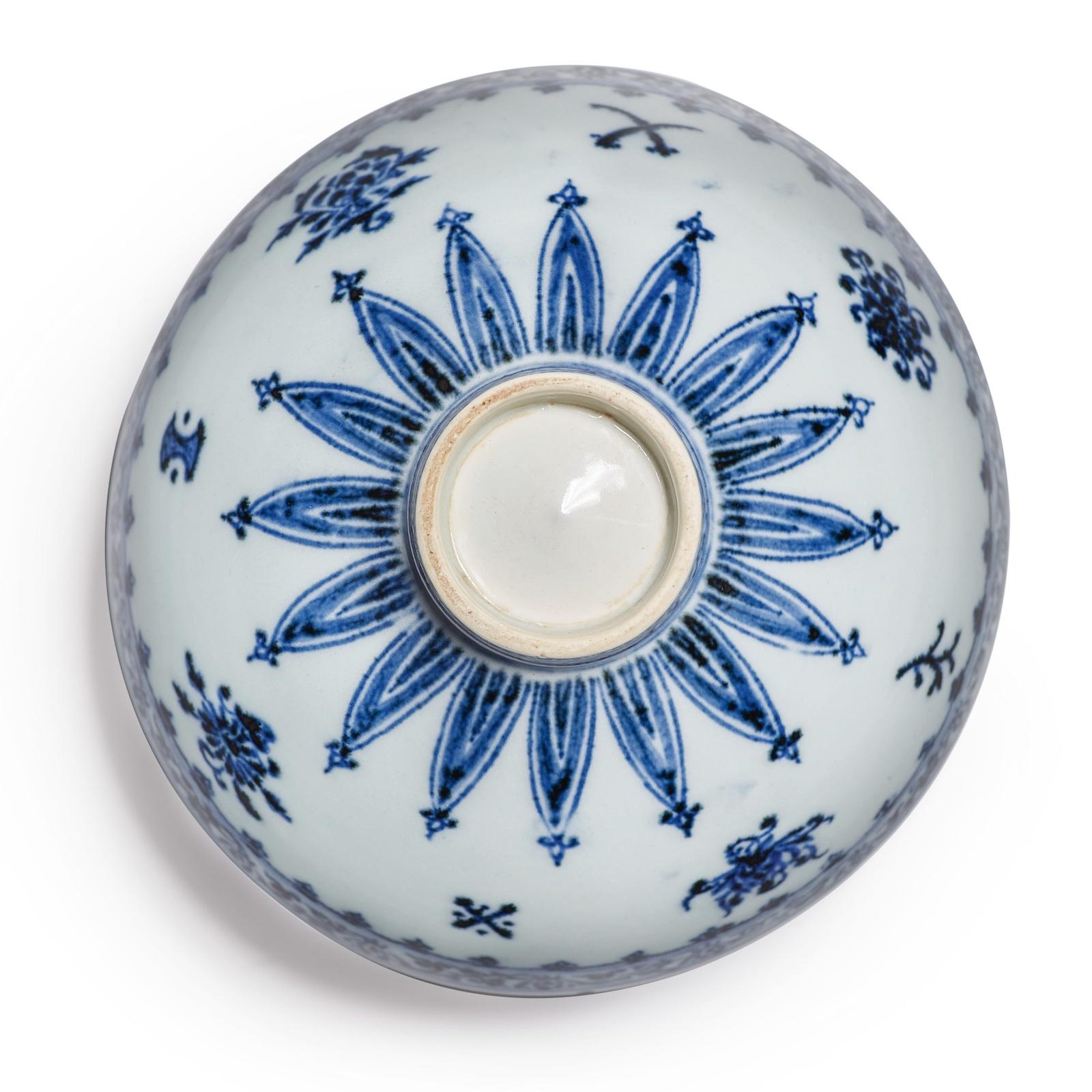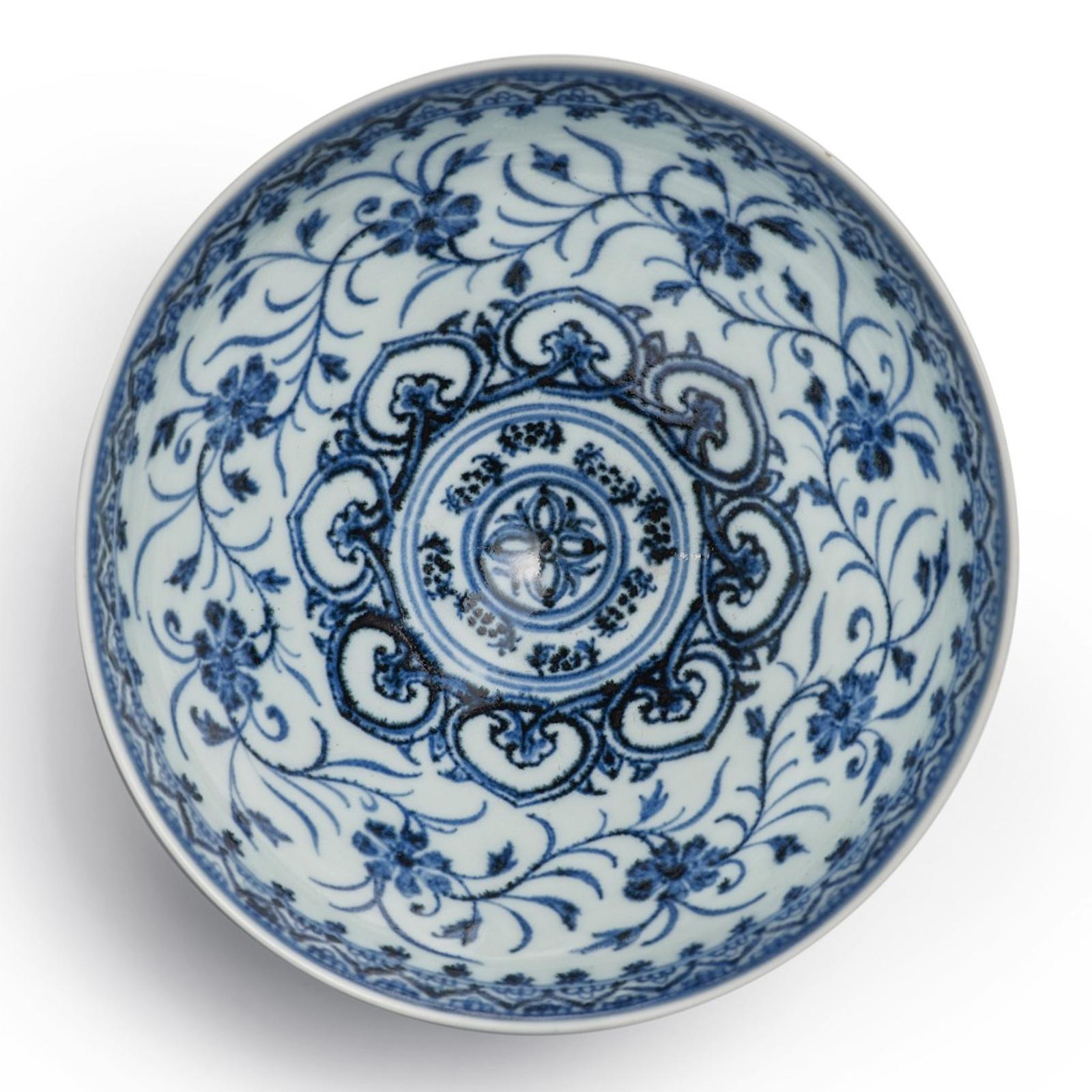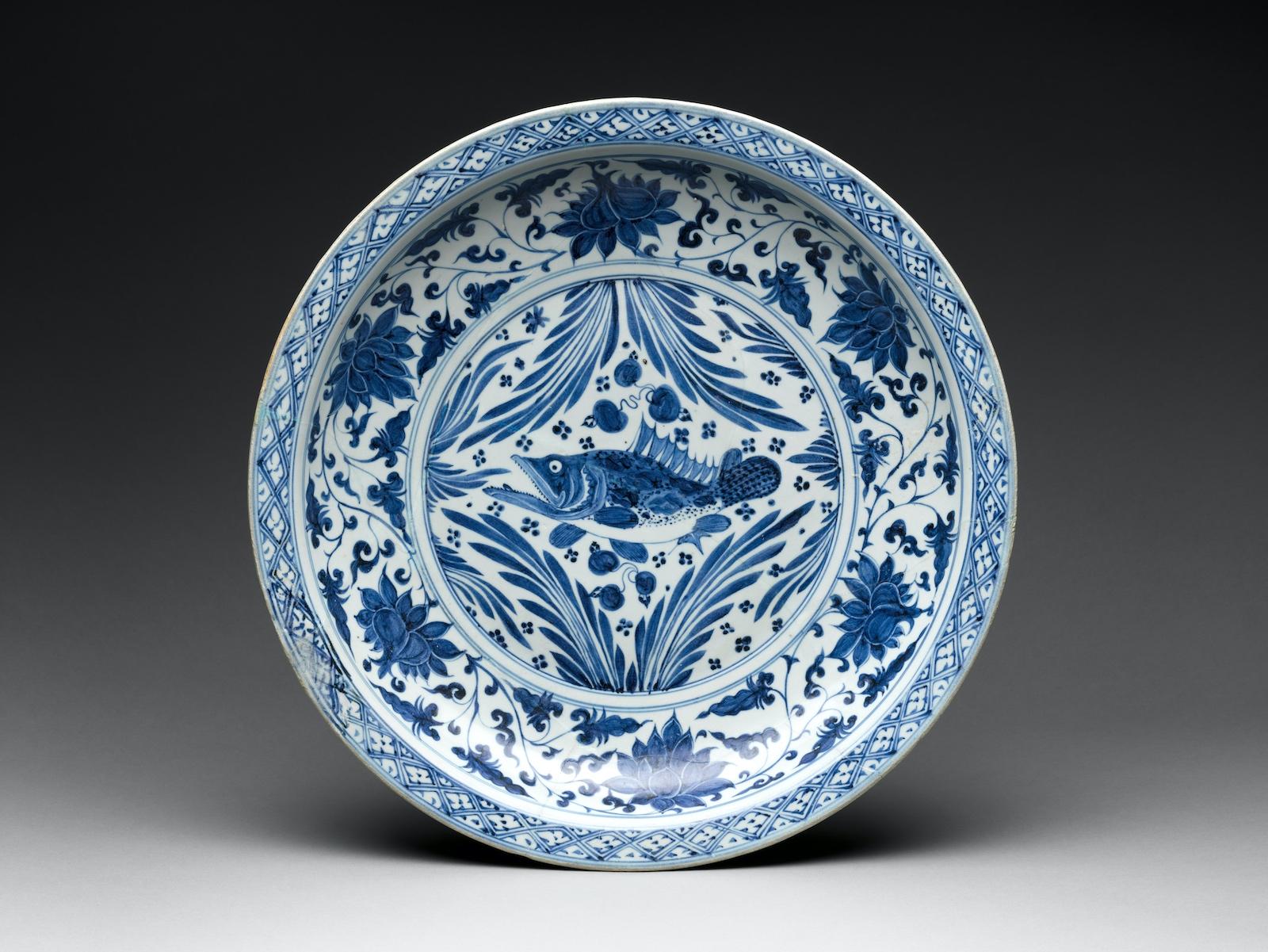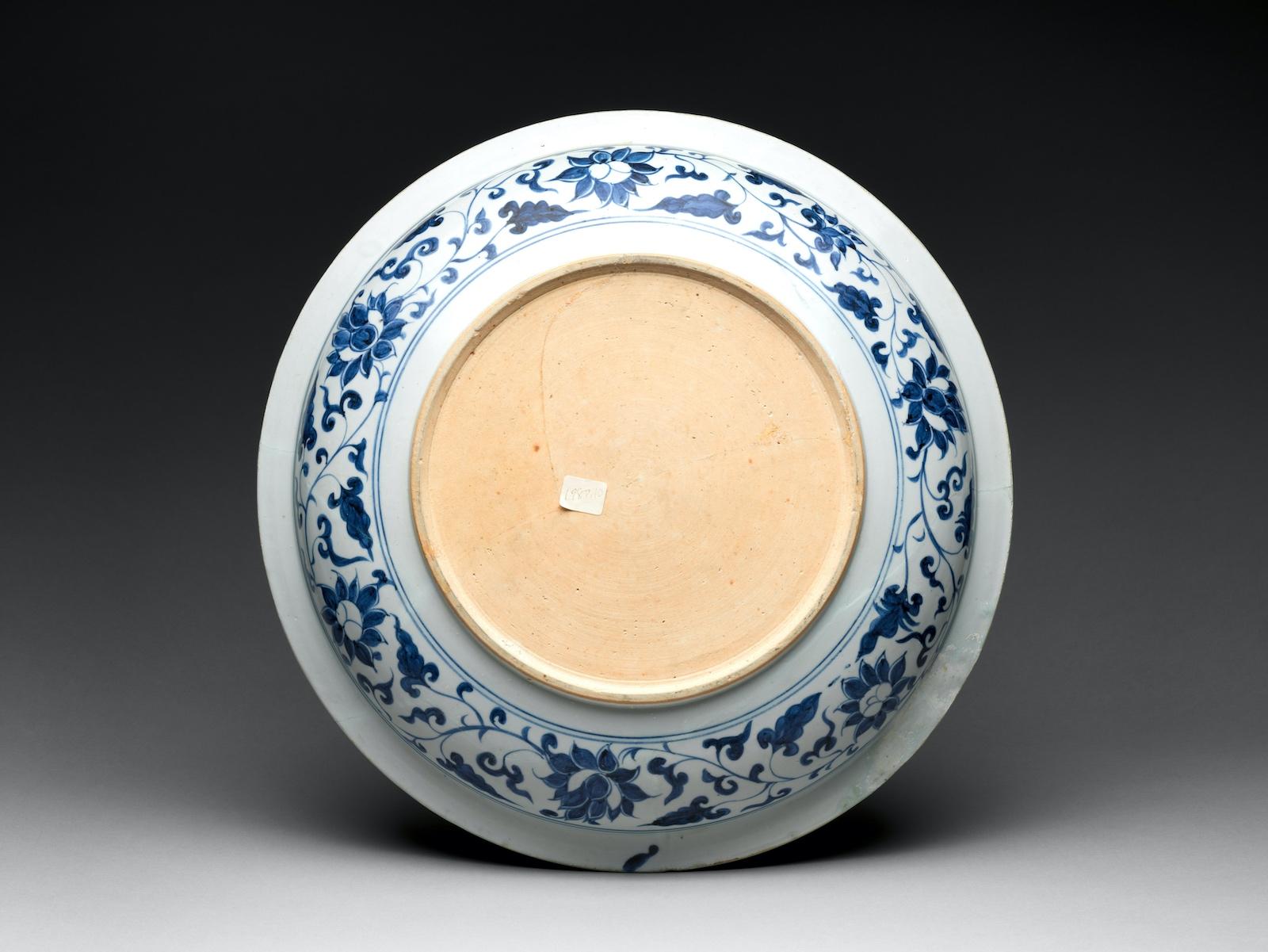The white and blue bowl found at the yard sale in Connecticut has exquisite motifs of lotus, chrysanthemum, peony, and pomegranate blossoms on a smooth body and flawless glazing. This perfection was achieved on a very small vessel as the diameter of the bowl is a little over six inches (fifteen cm). Thanks to the expertise of Angela McAteer, head of the Chinese Department at Sotheby’s, and specialist Hang Yin, the bowl was dated back to the early fifteenth century and the reign of the Yongle emperor, the third ruler of the Ming dynasty (1368-1644). Yongle was a central figure in the development of Chinese porcelains. He introduced the practice of applying reign marks to every piece of porcelain and high-quality artifacts created for the court. Under his reign and patronage, the city of Jingdezhen, in the southern province of Jianxi, became the only area to make imperial ceramics.
In The Troubled Empire, historian Timothy Brook reports the taste for white and blue pottery originated in Persia. “The ban in the Koran on the ostentatious practice of eating off gold or silver plates ... created for blue-and-white an opening among wealthy Persian consumers who wanted to serve their guests on expensive tableware.” While Persian potters had plenty of dark cobalt, they lacked the skills to craft high-quality porcelains. Seeing an opportunity, Chinese potters began to produce white and blue porcelains for the Persian market from the fourteenth century.




